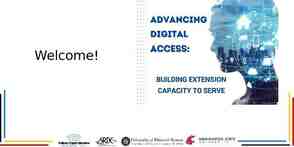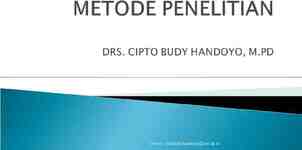The Past, Present, and Future of Online Education Jane Doe Option
13 Slides931.87 KB
The Past, Present, and Future of Online Education Jane Doe Option 1 Grantham University
“Throughout history, advances in technology have altered the way we teach and the way we are taught. First it was radio, bringing voices and news from far-off places into our homes and schools. Eventually, radio gave way to television, and soon we were reading books and viewing filmstrips with the help of audio cassettes that notified us with a “ding” when it was time to turn the page or advance the frame. Filmstrips evolved into movie reels, which were replaced by video, which eventually was trumped by live satellite feeds and, finally, the Internet” (Burnett, 2001).
The Beginnings of Online Education 1728 Caleb Phillips teaches shorthand to students through letters 1873 The Society to Encourage Studies at Home was founded 1892 The University of Chicago becomes the first to offer correspondence courses (Miller, 2014)
Radio, Television, Telephone and Telecourses 1922 Radio becomes a way for universities to offer courses 1953 Courses are offered through the use of television 1965 Students have the ability to take courses via telephone 1976 The first “virtual college” came into operation using telecourses (Miller, 2014)
The Internet 1981 Western Behavioral Sciences Institute starts an online program for their School of Management and Strategic Studies 1985 Accredited graduate degrees are offered by Nova Southeastern University 1989 University of Phoenix offers fully online bachelors and masters programs (Miller, 2014)
Advancements in Online Courses 1992 The Computer Assisted Personalized Approach (CAPA) was developed 1997 The Interactive Learning Network started to gain popularity 1997 Blackboard Inc. was founded (Miller, 2014)
Course Management System Advancements 2000 CourseNotes.com 2003 WebCT 2006 iTunes U 2009 YouTube EDU (Miller, 2014)
Course Management System Advancements Cont. 2012 MOOC’s 2014 UF Online is launched (Miller, 2014)
The Future of Online Learning More public universities developing fully online programs Increase in online student enrollments
The Future of Online Learning Cont. In 2012, the National Center for Education Statistics did a study on online enrollments for the fall semester. They concluded that 1 out of 4 students had taken at least one online course. The total amount of students was 5.4 million! (Haynie, 2014) Although this may seem like a lot of students, the studies stated it was much less than they had initially thought. 1.7 million less, to be exact. (Haynie, 2014) Even though they estimated more students than what enrolled, 1 out of every 4 students is a large population for a learning environment that has only been around for a short amount of time.
What to Expect? “Online learning is a new social process that is beginning to act as a complete substitute for both distance learning and the traditional face-to-face class” (Hiltz and Turoff, 2005).
What does this mean for traditional schools? We have already seen an increase in online schools and their enrollments. Students have the luxury of choosing from a multitude of online universities and programs. Schools who do not adopt online learning into their curriculum run the risk of losing potential students. We have reached a new day in age with the use of technology. Schools who do not adapt to this growing form of education run the risk of weakening in our society.
References Artus, N., & Nadler, K. (1999). A Computer-Assisted Personalized Approach in an Undergraduate Plant Physiology Class. Plant Physiology, 1177-1186. Burnett, S. (2001). GOING THE DISTANCE. Community College Week, 13(21), 6 Haynie, D. (2014, June 12). New government data sheds light on online learners. Retrieved December 14, 2014. Hiltz, S. R., & Turoff, M. (2005). EDUCATION GOES DIGITAL: The Evolution of Online Learning and the Revolution in Higher Education. Communications Of The ACM, 48(10), 59-64. Miller, G. (n.d.). History of Distance Learning. Retrieved November 10, 2014.


















